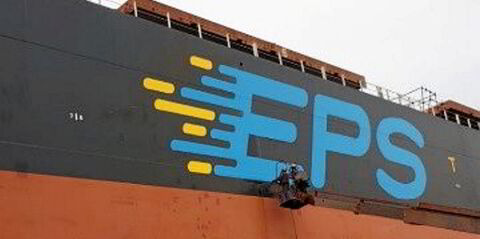In the wake of COP26 and the International Maritime Organization's Maritime Environment Protection Committee meeting, shipping faces a stark reminder of the work needed to achieve its 2030 and 2050 decarbonisation goals.
Issues include the need to find viable green fuels and technologies, update training routines and maintenance regimes, recruit and retain capable certified crew members and reconsider risk and compliance measures.
Although there are big leaps to be made, we can also take smaller steps to make us more efficient.
We are already seeing this in ship operations, where vessels are being optimised to reduce fuel consumption through changes to their hulls, propulsion, heating, ventilation, air conditioning systems and more.
While individually these modifications may deliver a 1% to 2% decrease in fuel consumption and resulting emissions, the cumulative result can edge into double digits, particularly for older vessels.

The same attitude should apply to our processes and workforces. As we pivot maritime operations to a greener route, we need optimisation for our employees — who are our largest stakeholder group.
Any gains to be made on time and energy must be pursued so that individuals are freed up to focus their efforts where it is needed, while ensuring safety and compliance and without compromising operations.
Doing so also offers us an opportunity to reinvest workforce energy and wasted capital — real-time gains that make meaningful strides in reducing shipping’s environmental impact.
Streamlining communication
A vital component to optimised working is bridging the gap between ship and shore. Traditionally, ships' crews operate in a vacuum once they have departed a port, which harms communication and is often identified as an issue in incident reports.
Although our industry ostensibly has been looking to digitalise for more than a decade, there has been a reluctance to transition operations due to internet bandwidth issues, connectivity and retraining costs, corporate inertia and more.
However, the Covid-19 pandemic recreated this gap on land, essentially levelling the playing field between ship and shore. Digitalisation and the creation of centralised databases ensures the same information is available to all stakeholders and no longer requires back-and-forths via phone, fax or email.
Creating transparency
Removing the barriers to data sharing between stakeholders such as investors, vessel owners, company management, flag states, class societies, ship managers, crewing companies and more will drive the collaboration required to achieve sustainable decarbonisation.
Data to guide the transition must be accessible to stakeholders, resilient to disruption and streamlined to minimise loss of time. It must also be quality data that avoids confusion, overlap, mismatches in records, or gaps; after all, garbage in will result in garbage out.
Most importantly, data must be optimised to meet our needs. There is no point gathering reams of useless information that is not correctly analysed. We must target specific areas in which to improve efficiency and identify markers that will allow us to benchmark progress.
We must ensure that this data is not gathered and manipulated simply to reconfirm existing bias, but rather that it is reliable.
If carried out correctly, data analysed will not only increase transparency and offer scope for greater efficiency, but also build trust between stakeholders and collaborators.
Reclaiming time
While these shifts in method require agreement and multiple steps, there are genuine benefits long term.
Organisations could streamline internally to use best practices and internally agreed-upon parameters for a data set, with the data owner carrying the responsibility for that piece of data. This also makes that individual or team accountable when it comes to sharing information.
One way forward would be the creation and implementation of an interface that links internal software systems that allow everyone to access the same single source.
This cloud-based approach would guarantee that the same information is true, shared and available at every place.
Stakeholders can be given access to these systems directly, thereby eliminating the time and effort-intensive process of manually building individual reports.
This can also lead to a shift in operation style, facilitating faster and more streamlined decision-making as necessary information or documents can be accessed instantly.
In theory, this lays the groundwork for real-time decision-making across the entire company, including land and sea-based assets.
Rune Lyngaas is chief executive of TeroMarine,
which develops fleet management software
Do you have an opinion to share?
Email: news@tradewindsnews.com



